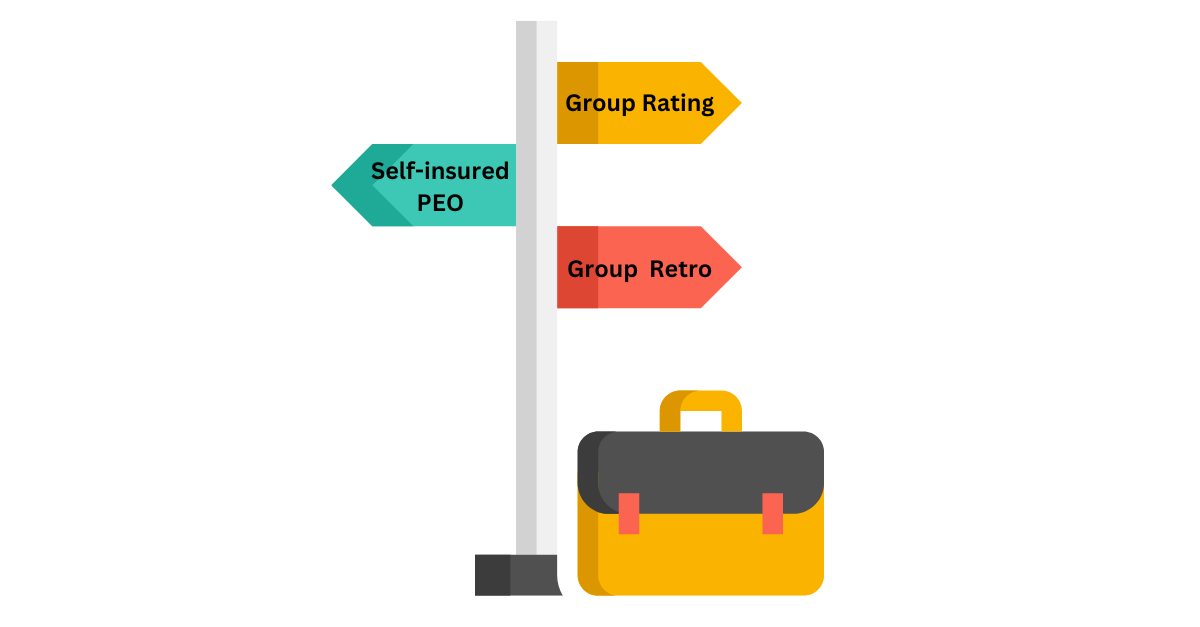News and Updates
Category: Ohio BWC
DOL Issues Final Rule on Independent Contractors
Who’s Really an Independent Contractor? DOL Finalizes New Rule Clarifying Classification Earlier this month, the U.S. Department of Labor (DOL) finalized its rules regarding classification of independent contractors. The organization hadn’t previously defined this by regulations, only by guidelines (which are as clear as OSHA “best practices”). The updated rule creates a six-factor “economic realities” test to determine whether or not a worker is truly an independent contractor under the Fair Labor Standards Act (FLSA). Among others, the test includes factors such as degree of permanence, amount of control the employer holds, and the worker’s skills. Since Ohio employers aren’t required to cover 1099 employees under their BWC policy, we have a lot of discussions with clients about whether or not a worker actually meets the qualifications of being an independent contractor. Understanding these qualifications is not only important for insurance purposes, but also for recordkeeping, and the application of minimum wage and overtime rules. Our friends at Roetzel & Andress have done a great job of explaining this new classification rule in a way that’s easy to digest and understand, so we’re deferring to their recent update for the details. For more info on how independent contractors can impact your Ohio BWC policy, check out this blog. This goes into effect March 11
Ohio BWC Update to Wrap Up 2023
Ohio Bureau of Workers’ Compensation will be rolling out several changes that will impact Ohio employers in 2024. We mentioned back in August that the way base rates are structured may be changing, which BWC has confirmed. It’s uncertain how this will impact the end premiums, but no big swings are anticipated. We’ll be keeping our clients informed about any major changes. The following rating elements will also be changing, with the potential to impact future premiums: • Deductible Factors • Individual Retro – minimum premium factors • Group Retro - loss development factors • Premium Size Credit – ranges and factors This is also a “wait and see” situation, as we don’t yet know exactly what changes BWC plans on making to these elements. Certificates of coverage will look different next year as well. They’ll now also list the employer’s MCO, any additional insureds, officers, who is eligible for elective coverage (such as owners), and NCCI codes and descriptions, in addition to the company’s address. As of now, if employers need to make a minor change or correct an error in a company’s policy name, they had to complete a specific form and fax or mail that form back to BWC. The only way this process could be made slower would be by carrier pigeon. Luckily, they’ve stepped int
August BWC Update: Program and Premium Changes for the Year Ahead
Ohio BWC will be making some changes for the 2024 policy year (beginning 7/1/24), some of which may have a small advantage for certain policyholders. Employers will still be subsidizing BWC’s administrative fund as they always have, but House Budget Bill 31 will change how the money is accounted for. Right now, state fund employers are paying base rates plus 29.01%, and that percentage is an administrative fee that goes into the fund. In the future, the admin fee will be fully baked into the base rates, resulting in rates that are roughly 20% higher. All told, employers shouldn’t see a huge difference in amounts paid to BWC. This will apply to both public and private employers, beginning on their respective 2024 policy year start dates. Another change will allow for potentially better refunds from post-policy year savings programs, like Group Retro, Safety Council, etc. In prior years, those rebates were calculated based on a percentage of “standard premium” – in other words, premiums before BWC’s 29% admin fee was tacked on. If an employer paid $50,000 in annual premium to BWC, only $35,500 if it was counted as premium that they’d be rebated on. Program credits and refunds will begin using full premium in 2024, instead of peeling off the administrative portion of premium when calculating refunds and credits. The premium dollars going into Retro consortiums will still exclude Premium Size Factor Reductions. T
It's True Up Time Again!
BWC’s True Up window began on July 1, 2023 and will run through August 15, 2023. This is a process required by Ohio BWC at the end of each policy year, where your premiums based on projected payroll for the previous policy year are balanced with premiums based on your actual payroll over the past year. Compliance with both the reporting and payment of any balances affects your company’s eligibility for most savings programs (like Group and Group Retro). If your actual payroll was higher than projected, you’ll be expected to pay that balance to Ohio BWC no later than August 15th. If you are unable to pay the lump sum at that time, please note that any future premium installments will first be applied to your delinquent True Up Balance before being applied to your premium installments. Payment plans for True Up balances are only available through the Ohio Attorney General’s office following an application process. If this year’s True Up caught you by surprise, next year consider running a mock report in May or June to help your company prepare for any balance that may be owed. The payroll classifications and totals reported this summer will be used to determine your 2024 policy year premiums. For the 2023 policy year that just began, BWC will be using payroll projections based on your True Up from July 2022. Adjustments to your estimated payroll can also be made throughout the year by contacting BWC at 1-800-644-6292. Spooner clients are
Choosing the Best Workers' Comp Partner for Your Business
Even though the 2023 BWC policy year just started, we’re already looking ahead to 2024 Group Rating and Group Retro programs. It can be hard to feel like a savvy buyer when it comes to workers’ comp in Ohio, but Spooner would like to share some pointers for how to understand the timeline and choose the best partner. If you’re thinking of changing your partner for Group Rating or Group Retro, be sure not to complete the renewal that your current TPA sends this summer. Most employers don’t realize that cutting a check for a renewal in summer of 2023 will obligate them to their current TPA through June of 2025. Make sure your accounting team is aware of this, too. We’ve seen too many unhappy customers of other TPAs get trapped this way. Are you under the impression that because you’re a member of XYZ Chamber of Commerce, you have to utilize their partner for workers’ comp programs? Not the case. The sponsoring organization frames it that way because there’s money on the table. For example, if you are an XYZ Chamber member (who happens to be partnered with a specific TPA) and you want to leave that TPA, XYZ Chamber makes less money. Naturally, they want you to stay with their TPA and may even advise you can’t get that discount outside of their partnership. This is patently false. Most TPAs have access to all of the same Group Rating and Group Retro programs for all industries, and the sponsoring orga
MCO Open Enrollment is Here!
Many of you know that every two years in May, MCO Open Enrollment occurs. This is the time that Ohio employers can choose the Managed Care Organization (MCO) they’ll work with for the next two years, and beyond. If you’re reading this and Spooner Medical Administrators, Inc. (SMAI) isn’t your MCO, now’s the time to move on possibly the best business decision you’ll make this year. Especially if you work with Spooner Inc. as your TPA, having SMAI as your MCO really opens the lines of communication between both parties. SMAI's team is ready to schedule a call, Zoom, or in-person meeting with you anytime through May 26. Click here to send them a message, or give them a call. Remember, MCO Open Enrollment only comes around every two years and only lasts four weeks. If you’re on the fence, it may be time to take a chance. Switching MCOs costs nothing, but when claims are managed poorly from a medical perspective - you’ll feel the sting down the road in your BWC premiums. Additionally, bi-weekly management calls and customizable reports can help you feel like you’re never out of the loop with what’s happening in your claims. Speaking of staying informed - SMAI's proprietary web-based software allows you create and run customized reports 24/7, report a claim at any hour, search in-network providers, and even create multiple company logins with different restrictions and a
2018 & 2019 Group Retro Update
Many of you may be wondering what the status is of the Group Retro lawsuit that we talked so much about in February. Just over two months have passed – but when it comes to legal matters, it’s not much time at all. To catch you up to speed, a magistrate determined in February that BWC abused their discretion by withholding Retro refunds. BWC had a two-week window following that 2/6/23 decision to file any objections to the decision – which of course, they did. They chose to reiterate several points from their original arguments, and indicated that they did possess the authority to change a portion of the Revised Code without going through the typical rulemaking process. Our lead plaintiff, Kent Elastomer, and their counsel at Roetzel & Andress have already filed a response to those objections. We’re waiting to see if the full court of appeals wishes to hear oral arguments or proceed with the record that has already been established. Unfortunately, there is no timetable on these next steps, but we will keep you updated here on our blog, on our LinkedIn page, and through our client services managers (if you’re a current Spooner client). If you participated in Group Retro during the 2018 or 2019 policy years and would like to be on our roster so we can fight for your refunds when the tie comes, complete this form and one of our team members will be in touch with
Ohio BWC Rates Still Rising for Some Employers in '23
You may remember that we told you earlier in the year that Ohio BWC’s “Base Rate Reduction” didn’t mean lower rates for everyone. Now we have the data on which base rates are going up, and the Ohio workers’ comp policies that increases will be impacted. Manual (NCCI) codes within all industries will see increases, but some more than others. If your business classifies payroll under manual codes for commercial, transportation, construction or agriculture, some of your base rates may increase as much as 20%. These new rates will become effective when the new BWC policy year begins on July 1, 2023. Being enrolled in Group Rating for the 2023 policy year doesn’t “lock in” rates – these will still apply regardless of program enrollment. No one likes surprises when it comes to finance, so we’re here to help determine how much of an increase you can expect. If you complete this form on our website, we’ll calculate your increase for you and we’re happy to discuss additional savings options. If you have any additional questions about these changes, please contact us at
Catastrophic Safety Services
We’ve been collecting testimonials from a few clients lately, and one of them spoke about how our safety team responded to a stressful situation in a way that gave him a lot less to worry about. HR Associates Personnel Service in Piqua, Ohio began working with Spooner as their TPA over ten years ago. Soon after our partnership began, an employee tragically suffered a heart attack while driving a forklift - and right away, Spooner sprang into action. We provided an investigation, followed by a comprehensive study with photos of the worksite. Steve Risner, Vice President of HR Associates, told us that “having piece-of-mind on that day spoke volumes about the integrity of Spooner’s team.” When catastrophic events happen in the workplace, management shifts into high gear to respond. Incidents like amputations, forklift accidents, fatalities, and personal illnesses that manifest at work are examples of catastrophic events that could lead to OSHA and VSSR issues. Spooner’s safety professionals can support your management team in these crisis situations by conducting thorough incident investigations to identify the root cause, and creating plans for preventive actions going forward. Catastrophic events require a swift and proactive response, so we urge you to contact us as soon as these events occur, so we can provide best
The Future of the Voluntary Abandonment Defense Remains Unclear
A recent House Bill made changes to Revised Code (R.C.) 4123.56, which became effective in September 2022. This part of the R.C. clarifies eligibility for Temporary Total Disability (TTD) compensation in workers’ comp claims. It was meant to provide clarity following the decades of case law that had complicated the “voluntary abandonment” defense often used by employers when a claimant takes voluntary action to end their employment. While the statute reads clearly enough, the changes resulted in ambiguity due to lack of detail. Ohio BWC or the Industrial Commission will often issue a clarification following such changes – but that didn’t happen this time. On March 2, 2023, the Tenth District Court of Appeals in Columbus issued a decision in State ex rel. Autozone Stores, Inc. v. Industrial Commission that could have a broad impact for Ohio employers. This was the first time an appellate court weighed in on the application of 4123.56(F) in a TTD claim, and it wasn’t a favorable ruling for businesses. Essentially, the ruling allowed the claimant to continue collecting TTD even though they were able to work with restrictions (for a different employer). The potential impact of this decision could hold employers hostage with no defense in TTD claims, driving up both EMRs and premiums for Ohio businesses. If you’d like to read more about the case surrounding this and its implications, click















